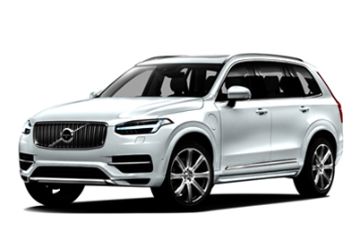![Hybrid lives on: 2025 Volvo XC90 facelift to launch in Malaysia with updated styling, improved suspension 01]()
This is the 2025 Volvo XC90 facelift, arriving a full decade after its 2014 debut, and it’s a significant update both inside and out.
What’s changed? In terms of design, the XC90’s face now borrows some cues from its fully electric cousins, the EX90 and EX30. The Thor’s Hammer headlights are now sharper, with a more pronounced T-shape, connected to a wider grille for a more cohesive look.
And about that grille – love it or hate it – Volvo added a new criss-cross slat pattern, which seems to be a nod to BMW’s latest designs. It’s still rocking the Iron Mark logo, with the signature diagonal chrome bar intact.
![Hybrid lives on: 2025 Volvo XC90 facelift to launch in Malaysia with updated styling, improved suspension 01]()
Other than that, the bumper got a refresh with a wider central air intake and slimmer corner inlets, making it a little sleeker without losing its presence. Around the back, those signature vertical taillights haven’t gone anywhere either, though Volvo did smoke the internals to give it a cleaner look. There also new wheel designs, ranging from 20 to 22 inches.
![Hybrid lives on: 2025 Volvo XC90 facelift to launch in Malaysia with updated styling, improved suspension 02]()
Now, let’s talk power. The T8 plug-in hybrid (PHEV) variant carries over the same basic setup – a 2.0-litre turbocharged 4-cylinder paired with a 145 PS electric motor and an 8-speed automatic. Total output stands at 455 PS, hitting 100 km/h in 5.4 seconds. The battery remains unchanged at 18.8 kWh, so the electric-only range is around 63 to 71 km.
If you’re not into plug-ins, Volvo still offers two mild hybrid options, both with the same 2.0-litre engine. The B5 puts out 250 PS and the B6 bumps that to 299 PS.
![Hybrid lives on: 2025 Volvo XC90 facelift to launch in Malaysia with updated styling, improved suspension 03]()
Under the skin, the suspension’s been tweaked too. Volvo added new dampers that “mechanically adapt” to changing road conditions. Air suspension is still optional, and more soundproofing has been added to keep things whisper-quiet inside.
Inside, things get more interesting. The dashboard is all new, but at first glance, you might not notice. Volvo didn’t stray too far from the established XC90 layout. The vertical air vents? Still there, but the slats are now vertical. Chunky volume knob? Yep, still sitting proudly below the touchscreen.
![Hybrid lives on: 2025 Volvo XC90 facelift to launch in Malaysia with updated styling, improved suspension 04]()
The Orrefors crystal gear selector remains, and the optional Bowers & Wilkins sound system is still thumping, though with slightly reduced power – down to 1,100 watts from the previous 1,400 watts.
But it’s in the little, practical details where Volvo made the most changes. A smaller third cupholder and the repositioned Qi wireless charger might not seem like game-changers, but they’re nods to customer feedback. The new recycled decorative trim and updated ambient lighting also add a touch of sustainability and flair.
![Hybrid lives on: 2025 Volvo XC90 facelift to launch in Malaysia with updated styling, improved suspension 05]()
The new 11.2-inch portrait screen is big, bright, and now stands proud of the dash, though some might prefer a more integrated-looking screen. The pixel density’s been bumped up by 21%, and it’s running the latest interface from the EX models, meaning Google Maps takes centre stage while phone and media controls are permanently anchored below.
![Hybrid lives on: 2025 Volvo XC90 facelift to launch in Malaysia with updated styling, improved suspension 06]()
Safety? Of course. It’s a Volvo, after all. Expect all the usual suspects: autonomous emergency braking, Pilot Assist Level 2, Run-Off Road Protection, blind spot monitoring, and rear cross-traffic alert, among others. Some markets even get fancy vehicle-to-X (V2X) communication.
The updated XC90 is now available to order in Europe, with production and deliveries starting by year-end. In Malaysia, the 2025 Volvo XC90 facelift is confirmed for launch next year, as per Sime Darby Motors' FY2024 financial results presentation.
![Hybrid lives on: 2025 Volvo XC90 facelift to launch in Malaysia with updated styling, improved suspension 07]()
Sime Darby Motors, which operates Volvo dealerships under Sime Darby Swedish Auto in Ara Damansara and Setia Alam, currently sells the outgoing 2024 XC90 for RM 418,888 (B5 mild-hybrid) and RM 434,888 (T8 plug-in hybrid). Both models are locally assembled in Shah Alam.
Also read: New Volvo XC90 confirmed to launch in Malaysia in 2025, refreshed styling to keep up with X5, GLE, RX














